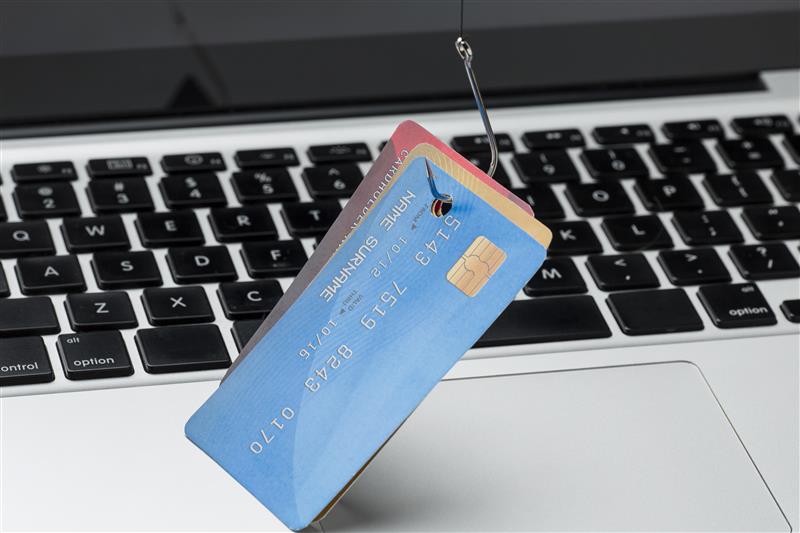How to Spot and Deal with Phishing Emails

Cybersecurity is a shared responsibility, and one of the most common threats facing individuals and organizations today is phishing. These deceptive emails are designed to trick recipients into revealing sensitive information, such as login credentials, financial data, or personal details. With phishing attacks becoming more sophisticated and frequent, it's crucial to stay informed and vigilant.
In this guide, we’ll walk you through how to recognize phishing emails, what to do if you’ve accidentally shared your credentials, and how to report suspicious messages in Microsoft Outlook. Whether you're working remotely or in the office, these steps will help you protect yourself and your organization from cyber threats.
What Is Phishing?
Phishing is a type of cyberattack where attackers impersonate legitimate entities to deceive recipients into clicking malicious links, downloading harmful attachments, or providing sensitive information. These emails often appear to come from trusted sources—like your bank, employer, or even a colleague—but they’re designed to exploit your trust.
Common Phishing Tactics Include:
- Urgent requests for login credentials or financial information
- Suspicious links that redirect to fake login pages
- Unusual sender addresses or formatting errors
- Attachments that contain malware or ransomware
Step 1: Confirm If You’ve Shared Your Credentials
If you suspect that you may have accidentally given out your email password or other sensitive information to a phishing scam, act immediately.
What to Do:
- Reply to your IT department or cybersecurity contact right away.
- Change your password immediately using a secure device.
- Enable multi-factor authentication (MFA) if it’s not already active.
- Monitor your account activity for any unauthorized access.
Quick action can prevent further damage and help secure your account before attackers gain full control.
Step 2: How to Spot and Report a Phishing Email in Outlook
Microsoft Outlook offers built-in tools to help users report suspicious emails. Reporting phishing attempts not only protects you but also helps Microsoft improve its filters and safeguard others.
How to Identify a Phishing Email:
- The message feels urgent or threatening (e.g., “Your account will be suspended!”)
- The sender’s email address looks off (e.g., “support@micros0ft.com”)
- The email contains unexpected attachments or links
- The formatting is inconsistent or unprofessional
How to Report Phishing in Outlook:
On Desktop:
- Select the suspicious email by clicking once.
- In the Outlook ribbon, find the “Report Message” button.
- Choose “Phishing” if the email is deceptive or “Junk” if it’s spam.
- Click “Report” to submit the email to Microsoft.
On Web or Mobile:
- Tap the three-dot menu (⋮) next to the email.
- Select “Report Junk”.
- Choose the appropriate category: Phishing or Junk.
- Confirm the report.
Why Reporting Matters
Reporting phishing emails is more than just a personal safety measure—it’s a way to protect your entire organization.
Benefits of Reporting:
- Improves Microsoft’s spam and phishing filters
- Prevents malicious emails from spreading internally
- Helps IT teams respond quickly to emerging threats
- Educates others in your organization about phishing tactics
Cybersecurity Awareness: Tips to Stay Safe
Phishing prevention starts with awareness. Here are some best practices to help you and your team stay secure:
Do:
- Verify sender information before clicking links or downloading attachments.
- Hover over links to preview the URL before clicking.
- Use strong, unique passwords for each account.
- Enable MFA wherever possible.
- Keep software and antivirus tools updated.
Don’t:
- Respond to emails asking for sensitive information.
- Click on links from unknown or suspicious sources.
- Download attachments from unfamiliar senders.
- Share login credentials over email or messaging apps.
Real-World Examples of Phishing Emails
To help you recognize phishing attempts, here are a few examples of what they might look like:
Example 1: Fake Microsoft Login
Subject: “Action Required: Your Microsoft Account Will Be Locked”
Body: “We noticed unusual activity. Please verify your account immediately.”
Link: Redirects to a fake login page that steals your credentials.
Example 2: CEO Impersonation
Subject: “Urgent Request from John P. Shoff”
Body: “Canyou send me the client list ASAP? I’m in a meeting.”
Sender: A spoofed email address pretending to be your manager.
Example 3: Fake Invoice
Subject: “Invoice #84729 Attached”
Body: “Please see the attached invoice for your recent purchase.”
Attachment: Contains malware that infects your device.
What to Do If You’re Unsure
If you’re ever uncertain about an email, don’t take risks. Instead:
- Contact your IT deparment. NEVER forward it to anyone; that just spreads the risk.
- Use Outlook’s “Report Message” feature to flag it.
- Ask a colleague if they received a similar message.
Final Thoughts: Stay Alert,Stay Safe
Phishing attacks are constantly evolving, but with the right knowledge and tools, you can stay one step ahead. By recognizing the signs, reporting suspicious emails, and practicing good cybersecurity habits, you help protect not only yourself but your entire organization.
Remember: Cybersecurity is a team effort. Stay informed, stay cautious, and don’t hesitate to ask for help when something feels off.



